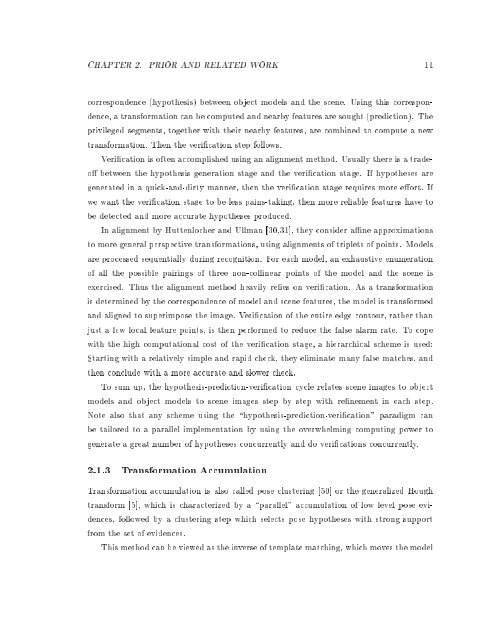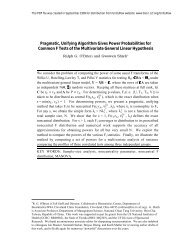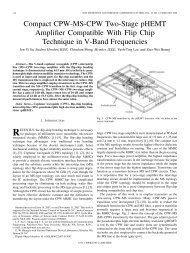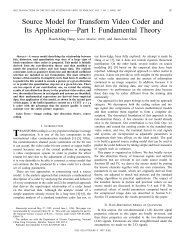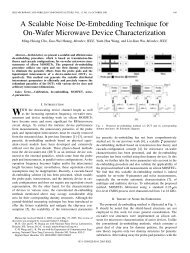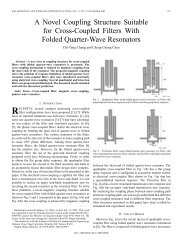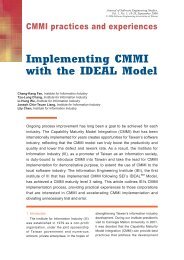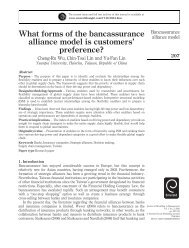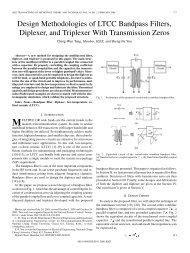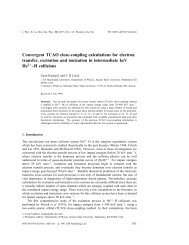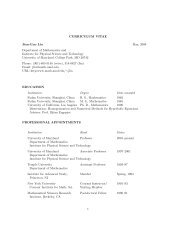A Probabilistic Approach to Geometric Hashing using Line Features
A Probabilistic Approach to Geometric Hashing using Line Features
A Probabilistic Approach to Geometric Hashing using Line Features
You also want an ePaper? Increase the reach of your titles
YUMPU automatically turns print PDFs into web optimized ePapers that Google loves.
CHAPTER 2. PRIOR AND RELATED WORK 11<br />
correspondence èhypothesisè between object models and the scene. Using this correspondence,<br />
a transformation can be computed and nearby features are sought èpredictionè. The<br />
privileged segments, <strong>to</strong>gether with their nearby features, are combined <strong>to</strong> compute a new<br />
transformation. Then the veriæcation step follows.<br />
Veriæcation is often accomplished <strong>using</strong> an alignment method. Usually there is a tradeoæ<br />
between the hypothesis generation stage and the veriæcation stage. If hypotheses are<br />
generated in a quick-and-dirty manner, then the veriæcation stage requires more eæort. If<br />
we want the veriæcation stage <strong>to</strong> be less pains-taking, then more reliable features have <strong>to</strong><br />
be detected and more accurate hypotheses produced.<br />
In alignment by Huttenlocher and Ullman ë30,31ë, they consider aæne approximations<br />
<strong>to</strong> more general perspective transformations, <strong>using</strong> alignments of triplets of points. Models<br />
are processed sequentially during recognition. For each model, an exhaustive enumeration<br />
of all the possible pairings of three non-collinear points of the model and the scene is<br />
exercised. Thus the alignment method heavily relies on veriæcation. As a transformation<br />
is determined by the correspondence of model and scene features, the model is transformed<br />
and aligned <strong>to</strong> superimpose the image. Veriæcation of the entire edge con<strong>to</strong>ur, rather than<br />
just a few local feature points, is then performed <strong>to</strong> reduce the false alarm rate. To cope<br />
with the high computational cost of the veriæcation stage, a hierarchical scheme is used:<br />
Starting with a relatively simple and rapid check, they eliminate many false matches, and<br />
then conclude with a more accurate and slower check.<br />
To sum up, the hypothesis-prediction-veriæcation cycle relates scene images <strong>to</strong> object<br />
models and object models <strong>to</strong> scene images step by step with reænement in each step.<br />
Note also that any scheme <strong>using</strong> the ëhypothesis-prediction-veriæcation" paradigm can<br />
be tailored <strong>to</strong> a parallel implementation by <strong>using</strong> the overwhelming computing power <strong>to</strong><br />
generate a great number of hypotheses concurrently and do veriæcations concurrently.<br />
2.1.3 Transformation Accumulation<br />
Transformation accumulation is also called pose clustering ë50ë or the generalized Hough<br />
transform ë5ë, which ischaracterized by a ëparallel" accumulation of low level pose evidences,<br />
followed by a clustering step which selects pose hypotheses with strong support<br />
from the set of evidences.<br />
This method can be viewed as the inverse of template matching, which moves the model


